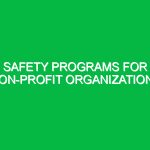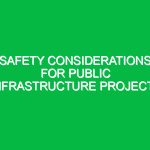Non-governmental organizations (NGOs) play a crucial role in addressing societal issues, providing humanitarian aid, and advocating for vulnerable populations. However, the work they do often places them in high-risk environments. This is where Health and Safety Best Practices for NGOs become paramount. These practices ensure the well-being of staff, volunteers, and the communities they serve, while also enhancing operational efficiency and sustainability in the Health, Safety, and Environment (HSE) domain.
Understanding Health and Safety Best Practices for NGOs
Health and Safety Best Practices involve a set of guidelines designed to prevent accidents, injuries, and illnesses in the workplace. For NGOs, these practices take on additional significance due to the often unpredictable and challenging conditions in which they operate. Whether it’s a medical outreach in a remote village or disaster relief in a war-torn region, implementing robust HSE protocols can mean the difference between success and failure.
Adopting health and safety best practices is not merely about compliance; it fosters a culture of safety that can significantly enhance staff morale and productivity. When team members feel safe and supported, they are more likely to perform effectively, ultimately benefiting the communities they aim to serve.
Identifying Hazards and Risks
Before implementing best practices, it’s essential to identify potential hazards and risks associated with NGO operations. These can vary widely depending on the nature of the work being performed and the geographic location of the activities. Here are some common hazards:
1. Environmental Hazards
These include exposure to extreme weather conditions, polluted water, or hazardous materials. For instance, NGOs working in regions affected by natural disasters may face risks from contaminated water supplies or unstable structures.
2. Biological Hazards
Staff may encounter infectious diseases, especially in healthcare-related missions. An example is the Ebola outbreak in West Africa, where health workers faced significant risks of infection due to inadequate protective measures.
3. Physical Hazards
Physical risks often arise from the use of heavy machinery, transportation in dangerous areas, or working at heights. For example, NGOs involved in construction projects need to ensure that all equipment is well-maintained and that safety protocols are followed.
4. Psychological Hazards
The emotional toll of working in conflict zones or disaster-stricken areas can lead to stress, anxiety, and burnout. A study from the Journal of Traumatic Stress highlighted that NGO workers in high-stress environments often experience higher rates of PTSD.
Implementing Safety Precautions and Best Practices
Once hazards have been identified, NGOs need to implement strategies to mitigate risks. Here are some actionable health and safety best practices:
1. Conduct Comprehensive Risk Assessments
Before embarking on any project, NGOs should conduct thorough risk assessments. This involves evaluating the environment, identifying potential hazards, and determining the likelihood and impact of these risks. For instance, during a mission in a conflict zone, a risk assessment might reveal the need for additional security measures or medical support.
2. Provide Adequate Training
Training is vital in ensuring that all staff and volunteers are aware of potential risks and know how to respond effectively. Regular training sessions on emergency response, first aid, and personal protective equipment (PPE) usage can dramatically reduce injury rates. For example, Médecins Sans Frontières (Doctors Without Borders) conducts regular training for its field workers on how to handle biological hazards, which has proven effective in reducing the incidence of infections.
3. Establish Clear Communication Protocols
Effective communication is key in high-risk environments. NGOs should establish clear channels for reporting hazards or incidents. This might include a dedicated hotline or regular safety briefings. Maintaining open lines of communication ensures that team members can report concerns without fear of reprisal, creating a safer work environment.
4. Utilize Personal Protective Equipment (PPE)
Depending on the nature of the work, appropriate PPE should be provided and mandated. This could include everything from gloves and masks in healthcare settings to hard hats and goggles on construction sites. NGOs must ensure that all staff are trained in the correct use and maintenance of PPE, thereby ensuring its effectiveness.
5. Promote Mental Health and Well-Being
Recognizing the psychological risks associated with NGO work is vital. NGOs should offer mental health resources, such as counseling services or stress management workshops. A personal anecdote from a colleague who worked in a post-earthquake relief effort highlighted how peer support groups significantly helped staff process trauma and build resilience.
6. Develop Emergency Response Plans
Emergency response plans should be established and regularly updated. These plans should outline procedures for various scenarios, including natural disasters, medical emergencies, or security threats. Regular drills can help ensure that staff are familiar with these protocols and can act swiftly and effectively in a crisis.
Regulations and Standards Governing Health and Safety for NGOs
NGOs are subject to various regulations and standards aimed at ensuring health and safety in the workplace. Compliance not only safeguards employees but also enhances the organization’s reputation. Here are some key regulations to consider:
1. Occupational Safety and Health Administration (OSHA)
In the United States, OSHA regulations provide guidelines for ensuring safe working conditions. While NGOs operating internationally may not fall under OSHA, many of its principles can apply to global operations.
2. International Labour Organization (ILO)
The ILO sets international labor standards, including those related to health and safety. NGOs should familiarize themselves with these standards to ensure compliance in their operations.
3. Local Laws and Regulations
Each country has its own laws governing health and safety. NGOs must be diligent in understanding and adhering to these local regulations, which may include specific requirements for training, reporting incidents, and maintaining safety records.
Conclusion
In summary, Health and Safety Best Practices for NGOs are essential for protecting the well-being of team members and the communities they serve. By identifying potential hazards, implementing robust safety measures, and adhering to relevant regulations, NGOs can create a safer working environment. Remember, a culture of safety not only enhances operational efficiency but also fosters a sense of trust and commitment among staff. As NGOs continue to navigate complex and challenging environments, prioritizing health and safety will ensure they can fulfill their missions effectively and sustainably.


